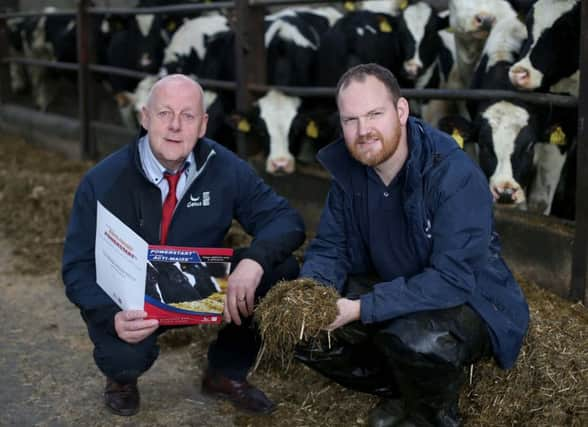What do you want from a silage additive?


So what should we expect from a silage additive?
Paul Nunn, products manager, Genus ABS sets out the criteria to find an additive that will add value to your silage crop.
The changeable climate in Northern Ireland means an additive must apply at least one million bacteria to each gram of grass. Dominating the naturally occurring bacteria on the grass gives you the best chance of promoting a desirable fermentation.
Advertisement
Hide AdAdvertisement
Hide AdBut getting an adequate number of bacteria is not the only criteria – it is important that the bacteria you apply are efficient, converting sugar into the acid you want. Lactic acid is much more palatable than other acids that can be produced in the process, so using an additive that only produces lactic acid makes great sense.
Speed is essential. While powder additives remain popular because of their ease of use, they are very slow to work due in large part to their need to rehydrate in the clamp. You need an additive which is rehydrated in clean water prior to application, meaning it gets to work immediately.
You also need to choose an additive that benefits from the ability to access all the sugar in the grass, even the complex stored sugar, making it extremely fast acting. The best untreated silages will generally take at least a week to ferment, whereas Powerstart which can access all of the sugar, including the complex sugar, can complete the process just 48 hours after the clamp is sealed.
Finishing the fermentation in just two days has a “hidden” benefit that is not always associated with a silage additive. Finishing the fermentation so quickly means that you keep more of the nutrients with less of the essential amino acids breaking down to less desirable products, Thus fewer of the undesirable breakdown products enter the cow’s bloodstream. This is why there are proven improvements in reproductive performance when Powerstart is used.
Advertisement
Hide AdAdvertisement
Hide AdPaul continued: “Having looked at hundreds of clamps of silage over the years, and having seen the analysis of many more I have observed a huge range of results from using the many and various additives on the market.”
He added: “So use an additive this summer. But use one that ticks all the boxes. Use one with enough bacteria to do the job in our climate – that is at least one million for each and every gram of forage. Use one that is applied as a liquid and can access all the sugar in the grass including the complex sugars. Use one that completes the fermentation in two days and only produces palatable lactic acid. Use one that has proven financial benefits for businesses just like yours, including improved reproductive performance. In summary – one that produces positive results consistently.”
For more information on Powerstart silage additive contact your Genus ABS representative or phone the office on 02838 331451.